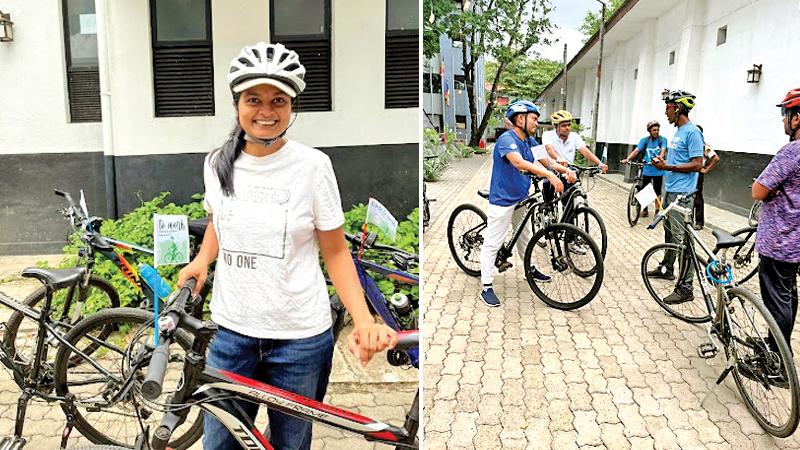
Sitting in a bus or in your car in heavy traffic every day on the way to work or home can be very difficult and tiring.
Furthermore, there is growing evidence that a sedentary lifestyle is linked to a number of adverse health effects. A possible answer? Get rid of four wheels and grab a bike ride. Unlike in Sri Lanka, bicycles are used for general transportation in other countries.
 It has been found that cycling for work significantly reduces the risk of various diseases compared to driving or public transportation, indicating that cycling has a number of health benefits. In addition, studies show that cycling gives greater health benefits than walking.
It has been found that cycling for work significantly reduces the risk of various diseases compared to driving or public transportation, indicating that cycling has a number of health benefits. In addition, studies show that cycling gives greater health benefits than walking.
Cycling is a top-notch cardio workout. Although many Sri Lankans consider cycling to be an embarrassment or an inconvenience to themselves, cycling can be described as the best solution to the fuel problems.
All you need to give it is a bike and the desire to ride. It can benefit your health, your finances and the environment.
Cycling also offers a number of benefits: cyclists are better for the local and national economy compared to motorcyclists, it helps to reduce your weight, it reduces your carbon footprint, you will be fit, it reduces pollution, by cycling people can explore what is around you and it improves your mental health.
In the light of fuel shortages, Sri Lankan Academy of Young Scientists (SLAYS) conducted an awareness campaign to promote cycling in Sri Lanka with the title “Cycle to work”.
The ‘Spinner’ , a well-known cycling school, assisted the campaign and provided tips on cycles and cycling. During the awareness program, young scientists attached to SLAYS experienced bike rides in Colombo.
The SLAYS acknowledges Dr. Chameera Udawaththa, a council member of SLAYS, for proposing this activity.
Dr. Thilini Perera, the chairman of the SLAYS, stated that she is willing to conduct this type of awareness campaigns to promote cycling in Sri Lanka with the young scientists in future.

